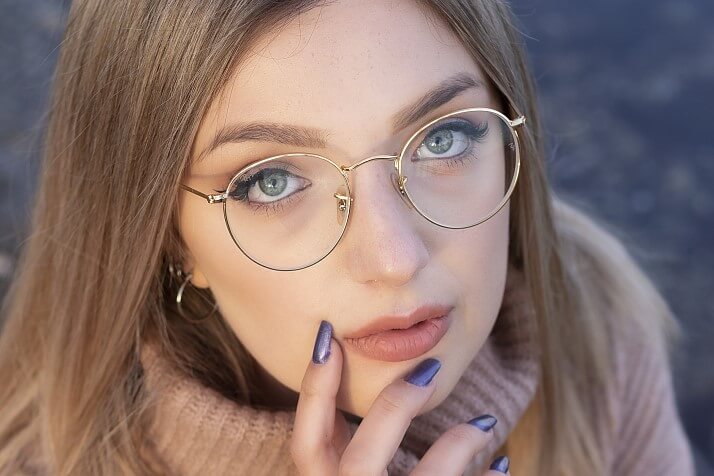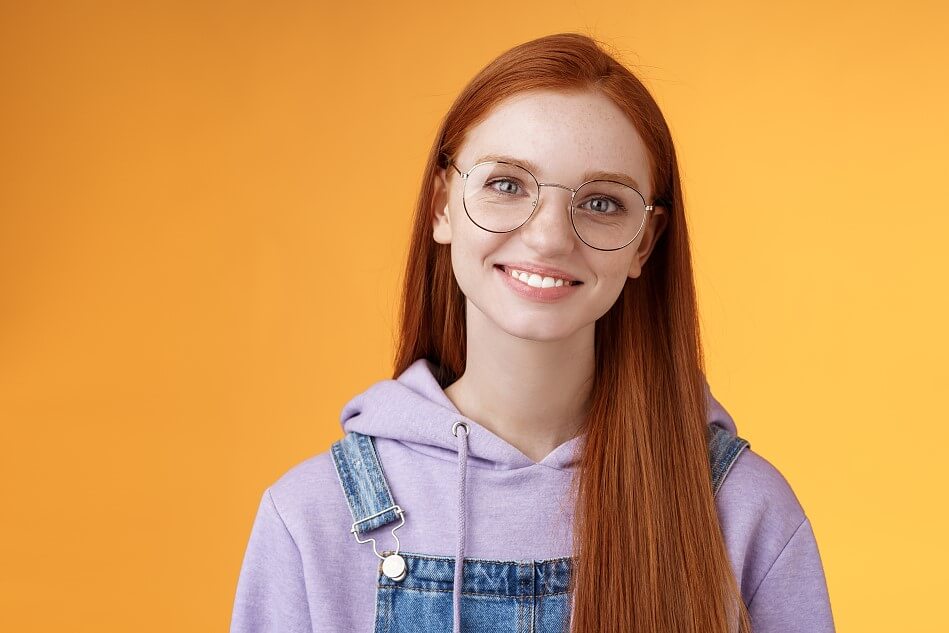Progressive lenses and single vision lenses
Single vision lenses are the most commonly used prescription lenses. This lens type has a single field of view or a prescription ability of the entire lens and can be used to correct myopia (nearsightedness) or hyperopia (supervision).
Progressive multifocal lenses are lenses with different upper and lower powers for the upper part to see far, and the lower part to see near. The distance from the fixed power above the lens to the fixed power below the lens does not change suddenly, but there is a gradual transition between the two through the gradual change in refractive power.
Confirm the optometric data
It is necessary to confirm the accuracy of optometric data. If you stay up late or look at the phone or computer for too long before the optometry, leading to visual fatigue, it will increase the degree. But if you can let your eyes have a good rest, and then take optometry, the degree may be restored to the original situation, so you need to know the state of optometry, to check if it really had increased in degrees. The main purpose of progressive lens is to use it for people who have bleached eyes and often take off the lens.
Two Tone Glasses Black and White
Oversized two tone glasses frames can match almost any kind of style, from classy to cute. A pair of oversized two tone round prescription glasses are the perfect choice to make a strong first impression. This style is fun and friendly — perfect for projecting the best parts of your personality. The variety of unique oversized eyeglasses we have is extensive. With so many choices, including oversized clear glasses, it can be hard to narrow down which big glasses are the right choice for you. A good place to start is these fashion-forward favorites.
What Is Polycarbonate Lens?
Polycarbonate was invented in the 1970s for aerospace applications and is currently used for the helmet visors of astronauts and for space shuttle windshields.
Polycarbonate lenses were introduced in the early 1980s in response to a demand for lightweight, impact-resistance lenses. Since then, polycarbonate glasses have become standard for safety glasses, sports goggles, and children’s eyewear.
Polycarbonate glasses come with a lot of features such as thin and light and they provide 100% percent UV protection and are up to 10 times more impact-resistance than plastic pr glasses lenses.
Tortoise Glasses
This unique pattern is the perfect choice for those who want to wear tops and jackets of any color. They fit almost any color. Tortoise glasses come in many colors, and this stylish pattern has a wide palette, so there's no need to worry about skin and hair color. If you want to keep up with current eyewear trends, unique-patterned tortoiseshell glasses are your best bet.
KOALAEYE blue light glasses
We take classes online, telecommute and shop online... Cloud life has become the norm for people to work and relax. While it adds convenience, it helps increase the time spent staring at electronic screens, which increases the risk of eye health damage. The latest data shows that mobile Internet users spend 144.8 hours a month on average. Blue-light-blocking glasses are becoming more and more popular. Advertisements for these glasses claim that excessive exposure to blue light can cause a series of eye problems, like eye dryness, eye fatigue, and, in severe cases, loss of vision. In order to protect your eyesight, there is a kind of blue light shielding glasses on the market, claiming to protect against computer radiation and blue light. So what can you choose to prevent blue light glasses?
The material of KOALAEYE blue light glasses has the benefits of ultra-lightweight design, wear resistance, and low friction coefficient. KOALAEYE blue light blockers (with yellow tints) are effective at blocking 100% of the harmful UV rays and relieving eye strain, especially when watching TV and computer. They always pay attention to the quality of their products.
What Is Polycarbonate Lens?
Polycarbonate was developed in the 1970s for aerospace applications and is currently used for the helmet visors of astronauts and for space shuttle windscreens. Polycarbonate lenses were introduced in the early 1980s in response to a demand for lightweight, impact-resistance lenses. Since then, polycarbonate has become standard for safety glasses, sports goggles, and children’s eyewear.
Polycarbonate glasses are thinner and lighter than regular plastic lenses. They provide 100% UV protection and are up to 10 times more impact-resistance than plastic or glasses lenses. Polycarbonate glasses also offer clearer and more comfortable vision if an anti-reflective coating is applied to the lenses, which can eliminate distracting lens reflections that interfere with vision, particularly when driving at night or in other low-light conditions when glare sources are present.
However, polycarbonate lens is a naturally soft material, making it more subject to scratching without adequate protection with a scratching-resistant coating. Polycarbonate glasses have high dispersion due to its low Abbe value of 30, causing chromatic aberrations.












































